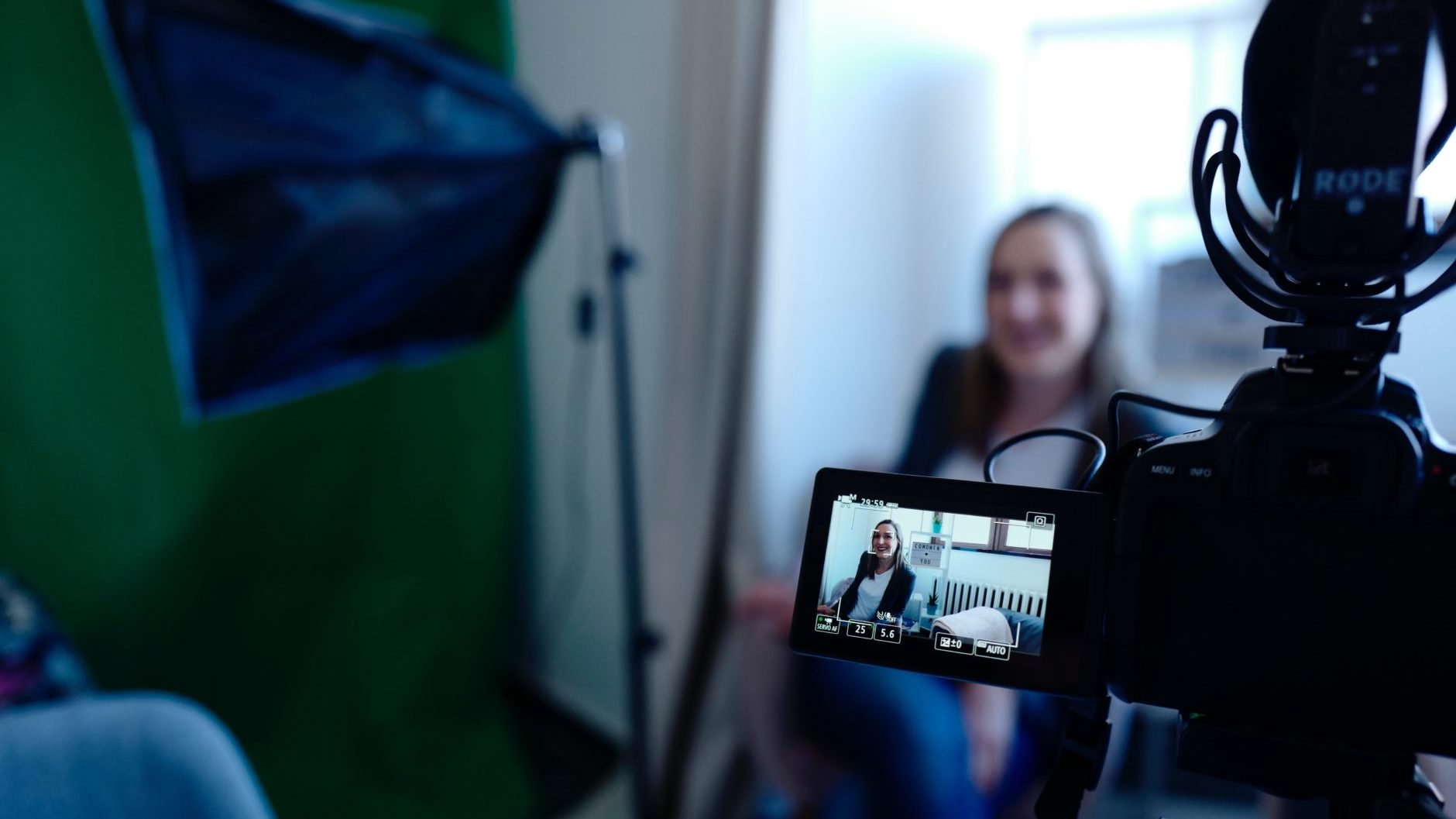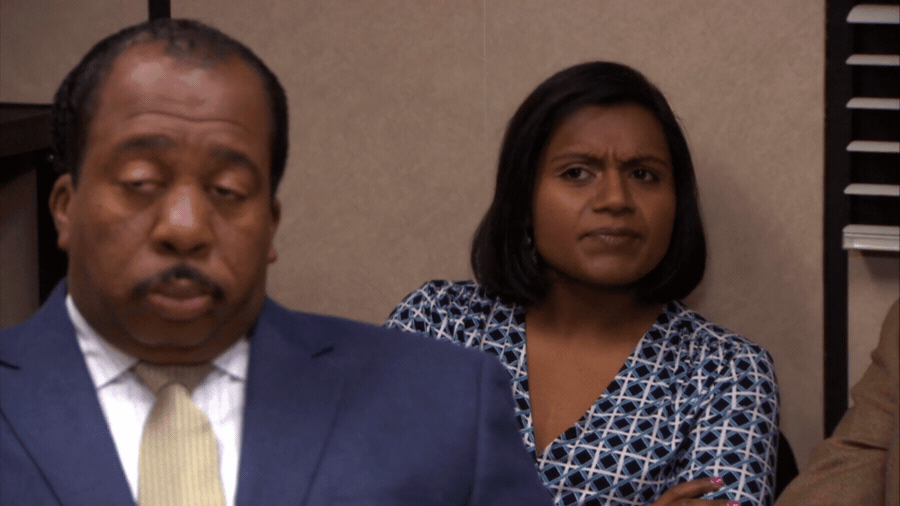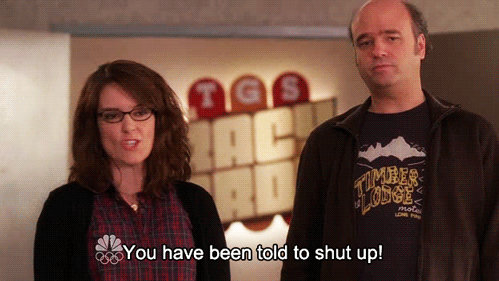
Interviews are all about extracting information from a source in order to tell a compelling and informative story.
We’re lucky to host student groups for panel discussions at Fuzzy Math every so often. It’s a nice opportunity to take a break from our day-to-day work, talk to students about design, and reflect a little on our paths as designers. We recently hosted a group of students from Michigan, and they had some really great questions. One student asked a question we hear a lot; “how do I ask the right questions in user interviews?”
We all paused then suggested certain interviewing best practices along with some UX research resources we’ve all used. This question really made me think, though: How do you teach someone how to interview? There are so many nuances to asking the right questions. I thought back a little to the lessons I learned in undergrad when I was studying journalism. Turns out there are a lot of similarities between interviews for news stories and interviews for user research. You are, after all, trying to get information out of someone.
I decided to look at what leading journalists do when they interview folks. It can be helpful to look at a problem through a new lens, and reframing this issue through the eyes of journalists gives us the opportunity to think differently about how we prepare for interviews. As it turns out, the principles used by journalists to conduct interviews align really well with the work we do as user experience researchers.
“It can be helpful to look at a problem through a new lens, and reframing this issue through the eyes of journalists gives us the opportunity to think differently about how we prepare for interviews.”
Journalists across the board offer pretty consistent advice. I looked at articles by Chip Scanlan from the Poynter Institute and Ann Friedman for the Columbia Journalism Review as well as Stephen D. Isaacs, a prominent journalist and professor at Columbia University’s School of Journalism.
Preparing for the interview
Brush up on the topic
Friedman and Scanlan both say that preparation is key to conducting a solid interview, and while preparing for a news story and preparing for user research entail different activities, it all comes down to whether you know enough to hold your own in a conversation. At Fuzzy Math, we work on a lot of complex enterprise products. We speak to highly specialized users, and we have to be able to pick up on complex systems quickly. We approach new projects with a fresh perspective and expertise, but we still have to know enough about the topic to have a productive conversation. Plus, demonstrating to the participant that you’ve done a little research lets them know you give a sh*t. At the very least, it helps to understand the lingo so you’re not constantly stopping the participant mid-thought to clarify. That doesn’t mean you should be afraid to ask “dumb” questions though. Set the expectation that you’re coming at the topic from a fresh perspective, and don’t be afraid to follow up on any unfamiliar terms.
“Demonstrating to the participant that you’ve done a little research lets them know you give a sh*t.”
The best ways we’ve found to quickly understand a complex system include analogous research and ecosystem maps. Analogous research requires a little creativity and hardcore Googling skills. If you’re doing research within a specific industry, consider looking in trade papers or industry-specific publications. No matter the field, there will be something published on the topic. Believe me.
Ecosystem maps require a little more work. We typically do this as part of our client kick-off. We’ll spend about an hour mapping out every actor, object, tool, and interaction within a system. It gives us a quick and dirty way to understand really complex systems in a really short amount of time, and by doing this with the client, we’re able to understand how they view their position within the market.
Craft your questions
One of the most crucial parts of interview preparation is crafting good questions. When we conduct user research, we make sure to have a well thought-out script. It’s important to know beforehand the topics you want to cover, and even if you don’t follow the script verbatim (FYI you shouldn’t) you should think about the way you want to ask these questions.
“It’s important to know beforehand the topics you want to cover, and even if you don’t follow the script verbatim (FYI you shouldn’t) you should think about the way you want to ask these questions.”
Open-ended questions, for instance, get participants to talk. Scanlan says that open-ended questions encourage expansive answers. These are the How, What, When, Where, and Why questions. I love open-ended questions because it takes the load off me as the interview moderator. I can ask a participant to tell me why they just did something, and they’ll usually go off, identifying new pain points or insights. I just have to watch and listen.

Something to look out for is double-barreled questions. Scanlan says these are “conversation stoppers.” A double-barreled question is really two questions at once. “Why does your team use Sketch? Does your team use any useful plugins for Sketch?” That’s double-barreled, and now the participant is stumped. This happens to me when I’m too overzealous about an interview. Sometimes your thoughts get away from you and you unintentionally ask two questions. These are confusing because the participant doesn’t know which to answer or they choose to answer only one of your questions.
Close-ended questions, according to Scanlan, put people on the spot. This tactic is very useful for journalists, but is it useful in user research? We’d argue that it is. Sometimes in research, there are questions that you need a participant to directly answer. It helps to have a firm yes or no from a large group of participants. “Do you use this plugin?” for example, gives you a quick direct answer. Depending on the answer, you may follow up with a more open-ended question.
Have a plan
As with most things, it helps to have a plan, and it helps to communicate that plan to the person you’re interviewing. That’s not to say you should lead your participant. Leading your participant means that you’ve asked questions in a dishonest way in order to get them to say something you want them to say. That’s not what we’re talking about here.
Communicating your plan to your participant means that they know what you expect to get out of the next hour or so of the interview. Max Linsky from Longform Podcast says, “Long interviews can have three acts — know where you want to start, where you want to end, and how you want to get there. And let the subject know the plan! These conversations can go off the rails quick — laying out the roadmap early lets you easily interrupt and move things along. Makes it feel like you’re on the same team.”
In research that means setting expectations, particularly when dealing with “difficult” participants. Explain to the participant why you’re there, what you’re hoping to cover, and what you’ll do with the information. That way, the participant won’t be surprised, they’ll feel more included in the process, and you’ll be able to steer them back on topic if things go awry.
Asking the questions
Make it a valuable conversation
Isaacs says that “The early stage of the interview is a feeling‑out period. The interviewee balances his or her gains and losses from divulging information the reporter seeks, and the reporter tries to show the source the rewards the source will receive through disclosure of the information‑publicity, respect, and the feeling that goes with doing a good turn.”
I don’t know if user research participants receive much publicity or respect in exchange for giving their feedback, but they are contributing to a world of better design! And their feedback is often on a product they use. When you interview enterprise users, you may have someone who was sent there by a superior. Make sure you make their time valuable. Explain the implications of their feedback on the tools they use. Folks might be more inclined to give honest and productive feedback if they know it’ll impact the tools they use every day.
Break the ice
There’s nothing as awkward as trying to “break the ice” with someone in a corporate setting while you’re sitting there with a notepad, a recording device, and a silent note-taker. That being said, you have no choice. You have to start the interview somehow. Once you’ve introduced yourself and explained why you’re there, start with a softball question. Ask the participant something easy. This helps ease their nerves and reinforces that you’re not there to “evaluate” them in any way.

If you’re interviewing someone about a tool they use every day, consider having them walk through how they start their day. You could say, “Talk me through what you do to start your day?”, or “What’s the first thing you look at when you open XYZ application?” This is an easy way to get acquainted with a product, and you’re priming the participant to start thinking about a specific task.
Embrace the silence!
I was wrong earlier. Trying to “break the ice” in a user interview is only the SECOND most awkward part of user research. Silence is by far the most uncomfortable aspect of interviewing, but you must embrace it. In Scanlan’s article for the Poynter Institute, he says, “Shut your mouth. Wait. People hate silence and rush to fill it. Ask your question. Let them talk. If you have to, count to 10. Make eye contact, smile, nod, but don’t speak. You’ll be amazed at the riches that follow.”
“Shut your mouth. Wait. People hate silence and rush to fill it. Ask your question. Let them talk. If you have to, count to 10. Make eye contact, smile, nod, but don’t speak. You’ll be amazed at the riches that follow.”
This is the one piece of advice I think of the most when suggesting how to conduct better interviews. This is also the piece I struggle with the most. It is against so many people’s nature to remain silent in a conversation when no one’s speaking. Your natural instinct will almost always compel you to fill the void. Some of the best interviewers have struggled with this. Oprah even struggled with this when she started out (She talks about it in the Making Oprah podcast. It’s really great. Give it a listen).

It’s not easy. Once you’ve been able to power through an awkward silence though, you’ll understand how valuable this tactic is to research. Remaining silent encourages the participant to speak up and giving them time to think allows for meaningful, valuable insights you otherwise would have bulldozed over.
Look around
In How I Wrote the Story, journalist Carol McCabe says she always tries to see people at home. “I can learn something from where the TV is, whether the set of encyclopedias or bowling trophies is prominently displayed, whether the guy hugs his wife or touches his kids, what clothes he or she wears at home, what’s on the refrigerator door.” It’s from an old interview, but the idea holds up.
If you’re interviewing users of enterprise software pay attention to what they have around them. The post-it notes, lists, and spreadsheets they’ve printed out and taped to the wall tell a much fuller picture. If you’re interviewing folks in their homes completing their taxes (which is something Fuzzy Math has done), look at all the documents the participant has pulled out. Take a picture if you can. If you can’t, sketch out what you see. These artifacts usually represent a hack or a workaround the participant has created to deal with a certain pain point in the tool.
“The post-it notes, lists, and spreadsheets they’ve printed out and taped to the wall tell a much fuller picture.”
Keep it conversational
Linsky says, “Do your research and write down tons and tons of questions. Only bring 15-20 questions to the interview. Only ask 10 of them. If you need to ask all 20, you’re not having a conversation.”
Addressing all your major questions, following a script, asking follow up questions, and remaining engaged is a balancing act that requires a little practice. This is the key to conducting successful interviews though. If you watch journalists on TV, they almost always have something in front of them, but you rarely see them looking down at their notes because they’re engaged in the conversation.
“Addressing all your major questions, following a script, asking follow up questions, and remaining engaged is a balancing act that requires a little practice.”
To do this successfully, you have to be familiar with your research questions. Don’t try to memorize them all though. That takes up too much bandwidth that could be used for follow up questions. Just prepare enough to be comfortable, and feel free to stop yourself if you’ve phrased a question in a confusing way. Inevitably, there will be a pause in the conversation. Use that time to say, “Let me just look at my notes real quick to see if we’re missing anything,” and take a breath.
Always listen at the end
When I was studying journalism in undergrad, I would write feature news stories on non-faculty staff members around campus. At the end of the interview, I’d ask, “Is there anything else you’d like to add?” They’d say, “I don’t think so…” and then launch into the most interesting anecdote of the interview.
The same happens in user research. You show up with a list of questions you were prepared to ask, but you don’t know what you don’t know. Some of the most valuable insights I’ve uncovered have come in the last 10 minutes of an interview when a participant decides to show me a part of a tool I didn’t know about. Sometimes they feel like the interview is over, and now they’re more relaxed. They realize it wasn’t a test, and they start thinking of things that might help you.
Presenting your findings
Tell a story
Ultimately, you’re conducting research because you need to tell a story. That story might manifest itself in a journey map. You might be putting together personas. You might be conducting exploratory research to guide the direction of a new product. No matter the format of your research output, your work has to tell a story.
“No matter the format of your research output, your work has to tell a story.”
At the end of your interview with a participant, make sure you have what you need. Make note of any particular soundbites or juicy quotes from the participant throughout the interview, and refer back to those when you’re putting your report together. Soundbites get a bad rep in most contexts, but when they’re used correctly and honestly, they help boil down complex problems. Friedman says they can “drive home the point.” They also make the research real. They lend credibility to your work, and they allow you to make a stronger case for your design recommendations.
So next time you’re in the position to conduct user research, remember some of these tips about asking questions, embracing the silence, and following the conversation. When you walk out of that interview, you should have a pretty good story to tell.